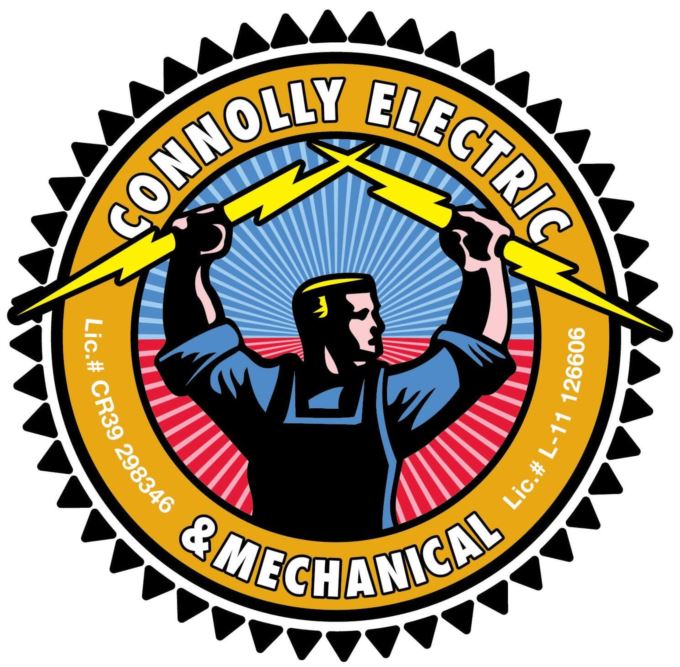
If you live in a newly constructed residence in Cottonwood & Prescott, it was in all likelihood made with energy efficiency in mind. This means more insulation and windows and doors with improved seals. While these improvements are great for keeping your heating and cooling costs reasonable, they’re not so good for your indoor air quality.
Your heating and cooling system needs to work with a filter. But if you have a flat filter, you won’t be getting enough filtration. This kind only provides the bare minimum of protection by stopping dust from getting into your home comfort system.
While you can upgrade to a pleated filter or one with a increased MERV rating, it still might not be adequate filtration, particularly if someone in your residence has allergies or other respiratory troubles.
That’s where a whole-house air purifier can be a good option. These systems are attached within ductwork to provide effective filtration throughout your house. Depending on the type you go with, you’ll be able to filter allergens, odors and even some viruses under certain airflow conditions.
Here are our top styles from Lennox, an industry leader in air purification.
Best Air Purifiers from Lennox
1. HEPA Air Purifiers
A HEPA air purifier, like the Healthy Climate® High-Efficiency Particulate Air Filtration System, delivers top-of-the-line filtration. These filters were first developed to guard scientists as they developed the atomic bomb. Today, they’re a staple in hospitals and other medical facilities.
The Healthy Climate HEPA Filtration System includes a three-step filtration process. A prefilter catches larger pollutants before the HEPA filter captures remaining miniscule particles. Then, a charcoal filter eradicates odors and chemical vapors.
The PureAir™ S Air Purification System is compatible with all HVAC brands and seamlessly connects with your smart home. It fights the three leading types of indoor air contaminants:
- Airborne particles
- Chemical odors and vapors
- Germs and bacteria, under certain airflow conditions
This air purifier can eliminate 99.9%* of pollutants, like mold spores, pollen, dust and pet dander. It’s also capable of removing or eradicating 90%1 of flu and cold viruses under certain airflow conditions. And, according to laboratory and field studies, it decreases and eliminates approximately 50% of your home’s odors and chemical vapors within 24 hours.
The PureAir S includes sensing features that make it simple to keep up. When linked with an iComfort® S30 smart thermostat, you’ll be notified when to replace the filter and UVA light.2 This home air purifier must be used with communicating Lennox systems and the iComfort S30.
2. Media Air Cleaners
Lennox Healthy Climate® Media Air Cleaners are made in a variety of MERV ratings to work with your needs. This rating determines how effective filters are at capturing contaminants. The better the number, the greater the filtration.
The Healthy Climate Carbon Clean 16® Media Air Cleaner is recommended for households with allergy suffers and pets. This is a HEPA filter air purifier, since it has a MERV 16 rating for hospital-grade filtration. And it eliminates more than 95%3 of aggravating particles from your home’s air.
The Healthy Climate 13 Media Air Cleaner is recommended for families who want enhanced protection from viruses and bacteria. This filter catches 99% of larger particles such as dust, pollen and lint. And up to 54% of miniscule particles down to 0.3 microns.4
The Healthy Climate 11 Media Air Cleaner is a a fantastic air purifier for allergies and in houses with pets. It removes more than 87% of bigger particles down to 3 microns and more than 28% of smaller ones down to 0.3 microns.4 It’s able to deliver this powerful filtration without increasing the cost of using your HVAC system.
These three media air cleaners work with any brand of HVAC system. However, it’s important to realize that some of the denser ones, like MERV 16 and 13, may restrict your system’s airflow. This can hike up your heating and cooling costs.
3. UV Air Purifiers
The sun’s UV rays are the reason why you get a blistering sunburn. But this type of light has a useful application when placed within your ductwork. It’s also tough enough to eliminate germs, mold and fungi under certain airflow conditions.
In actuality, the Healthy Climate UV Germicidal Light can reduce the number of airborne microorganisms by 50% in as quickly as 45 minutes.5 This light wrecks cell structure, which halts these microorganisms from flourishing and moving around your residence.
And this UV air purifier can also help keep your home comfort system clean and working efficiently. It takes care of germs, mold and fungi that are hidden in ductwork and your system itself. This UV light air purifier achieves all this work without producing lung-inflaming ozone.6
Breathe Healthier Air with the Help of Our Air Purification Specialists
Your loved ones’ comfort and health is our top priority at Connolly Electric & Mechanical. We realize there are many options out there. That’s why we make it easy to work with our indoor air quality professionals. We specialize in creating solutions tailored to your needs and budget, and we’d love to hear more about your residence and your air quality problems. Reach us at 928-251-4327 right away to start the process.
1Based on laboratory and field studies.
2PureAir™ S requires the iComfort® S30 and a communicating indoor unit.
3Leading consumer magazine, January 2012. Based on the published CADR, which is the standardized measurement system to determine the cubic feet of clean air produced per minute. Particles captured range in size down to 0.3 micron. One micron = 1/25,000 of an inch in diameter.
4Based on lab tests conducted on filters with conditions included in ASHRAE standard 52.2 for E1 and E3 size ranges.
5Based on constant circulation of air in the home, 3,000-square-foot home with a 5-ton air handler.
6U.S. Environmental Protection Agency, “Ozone Generators that are Sold as Air Cleaners: An Assessment of Effective and Health Consequences,” August 2006.




